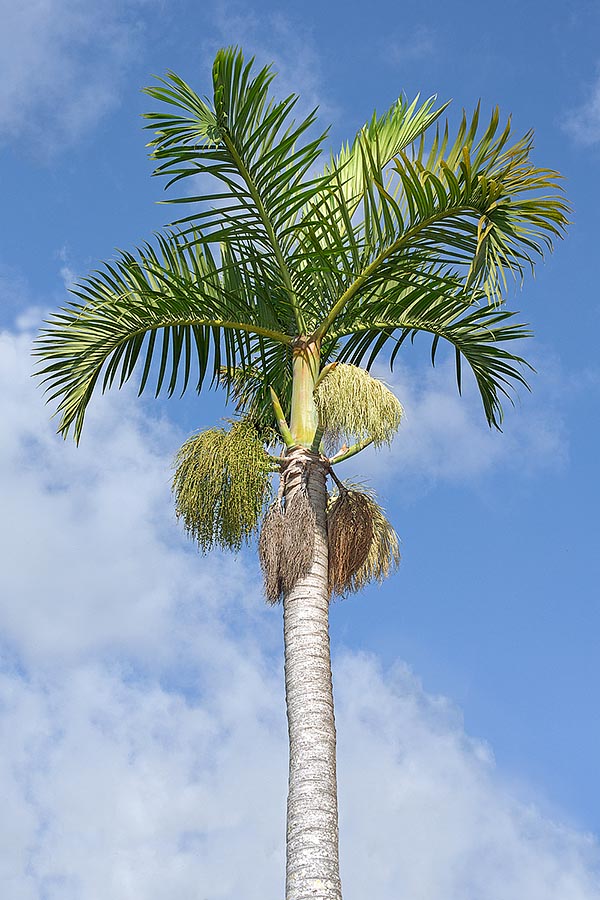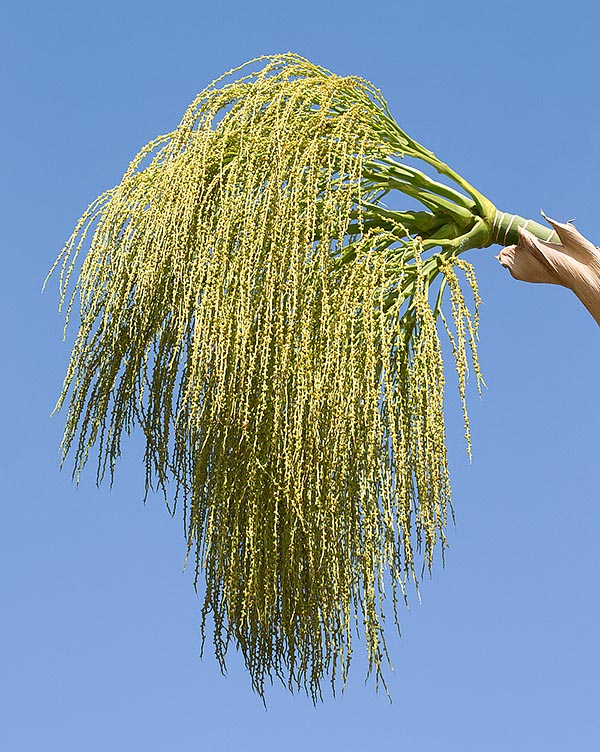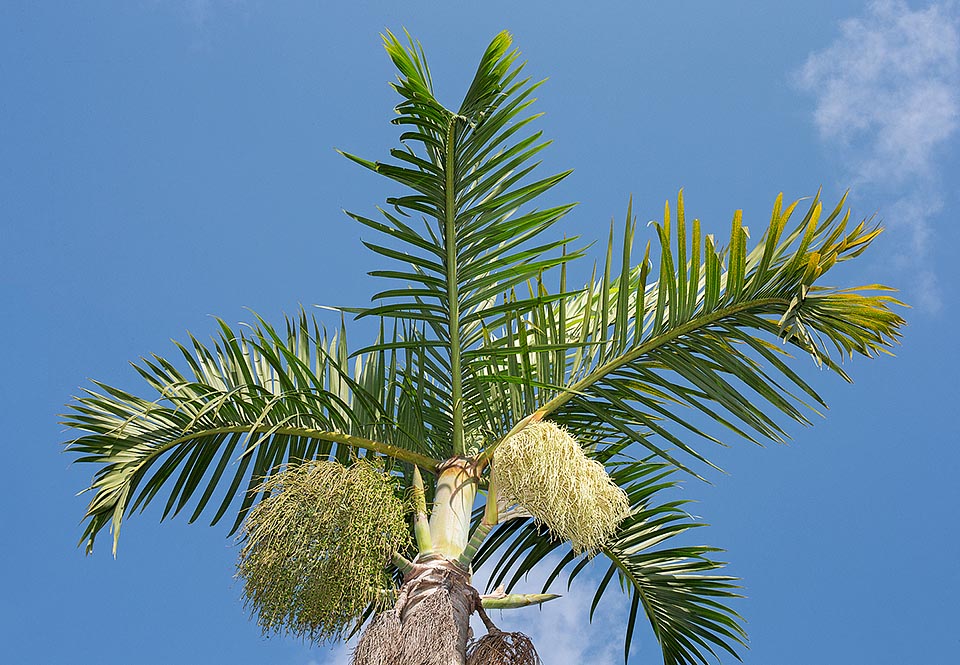Family : Arecaceae

Text © Pietro Puccio

English translation by Mario Beltramini

The Hyophorbe verschaffeltii is endemic to Rodrigues, small island of the Mascarene Archipelago © Giuseppe Mazza
The name of the genus is the combination of the Greek substantives “ὗς, ὑός” (ys, yόs) = pig and “φορβή” (phorbé) = forage, food; the species is honoured to the Belgian horticulturist Ambrose Verschaffelt (1825-1886).
Common names: Spindle Palm (English); palmier bouteille, palmiste fusain, palmiste marron, palmier massue (French-Mauritius); palmeira-fuso (Portuguese-Brazil); palma ahusada, palma astil, palma botella, palma de cemento, palma fusiforme, mascareña (Spanish); Spindelpalme (German).
The Hyophorbe verschaffeltii H.Wendl. (1866) is an unarmed monoecious species with erect solitary stem, greyish, smooth and almost cylindrical, at times slightly swollen in the central part, up to about 8 m tall and of 25-40 cm of diameter, on which are visible the rings trace of the junction of the fallen leaves.
The crown of the adult plants is formed usually by 6-8 pinnate leaves on an about 28 cm long petiole, ascendent and arcuate, 1,8-2,7 m long.
Lanceolate leaflets with acuminate apex, up to about 70 cm long and 5 cm broad in the central part, arranged regularly along the rachis and facing upwards at different angles, above of bright intense green colour, below greyish with the central vein provided of “ramenta” (tiny brown elongated scales with irregularly toothed margins).
The foliar base wraps entirely the stem for a height of 0,6-0,8 m, forming a sort of tubular capital swollen at the base, of green colour and covered by a white-bluish pruina.
Ramified inflorescence under the leaves (infrafoliar), initially enclosed in an erect spathe and curved-horn shaped, then almost horizontal with drooping rachillae with unisexual flowers on the same inflorescence, of cream white to yellow colour and fragrant, arranged in lined groups.

Fragrant inflorescence and male flowers that ripe before the female to favours the cross-fertilization © Giuseppe Mazza
The fruits are ellipsoidal, 1,8-2,4 cm long and of 1,2-1,6 cm of diameter, of colour initially reddish oranhe then bluish black when completely ripe, containing one single ellipsoidal seed 1,2-1,4 cm long and of 0,4-0,5 cm of diameter.
It reproduces by seed at the temperature of 25-30 °C in draining and aerated loam maintained constantly humid, but without stagnations, with germination times, if fresh, of 1-2 months, but usually of 3-6 months.
One of the most ornamental palms, when young as well as when adult, thing that has contributed to its diffusion and to avoid that it should completely disappear, being in nature reduced to few tens of individuals in unprotected areas and subject to intensive pasture that hinder the natural reproduction, for such reason it is reported in the red list of the IUCN (International Union for the Conservaiton of Nature and Natural Resources) as “Critically Endangered” (at very high risk of extinction in nature in the immediate future).
Of slow growth, is cultivable in the regions with tropical and subtropical climate in full sun, its cultivation may be tried, in the milder temperate warm zones, where temperatures close to 0 °C are very short lasting exceptions, with possible damage to the foliage.
It resists winds and sea aerosols and is not particular concerning the soil, provided draining, even if it prefers thos deep rich of organic substance. Waterings, during the dry periods, regular and abundant, but without stagnations, and fertilizations preferably with a balanced product with microelements.

Has risked the extinction in nature, but due to its elegance, when young and also when adult, is now present in many tropical and subtropical gardens © Giuseppe Mazza
Synonyms: Areca verschaffeltii Lem. (1866); Mascarena verschaffieltii (H.Wendl.) L.H.Bailey (1942).
→ For general notions about ARECACEAE please click here.
